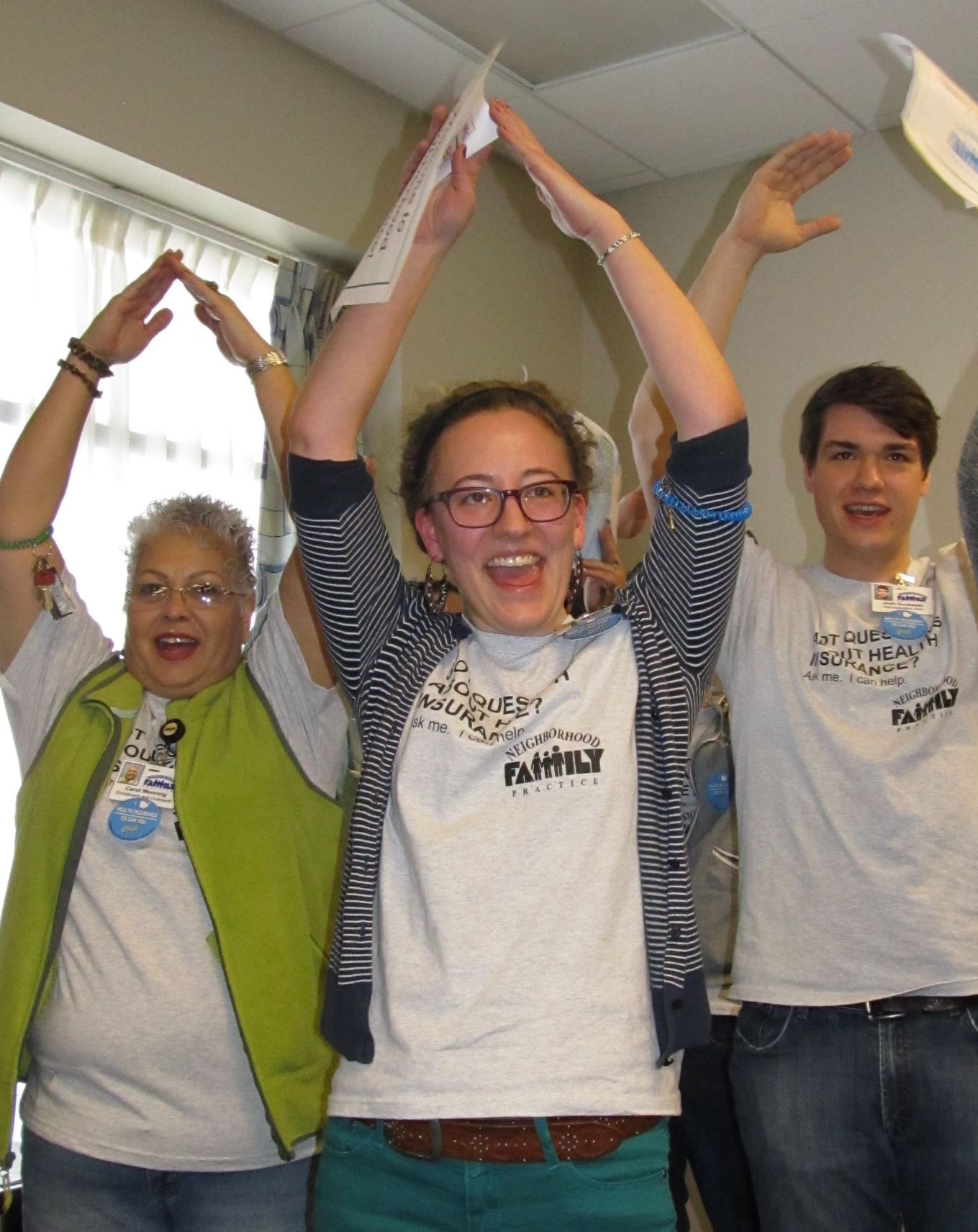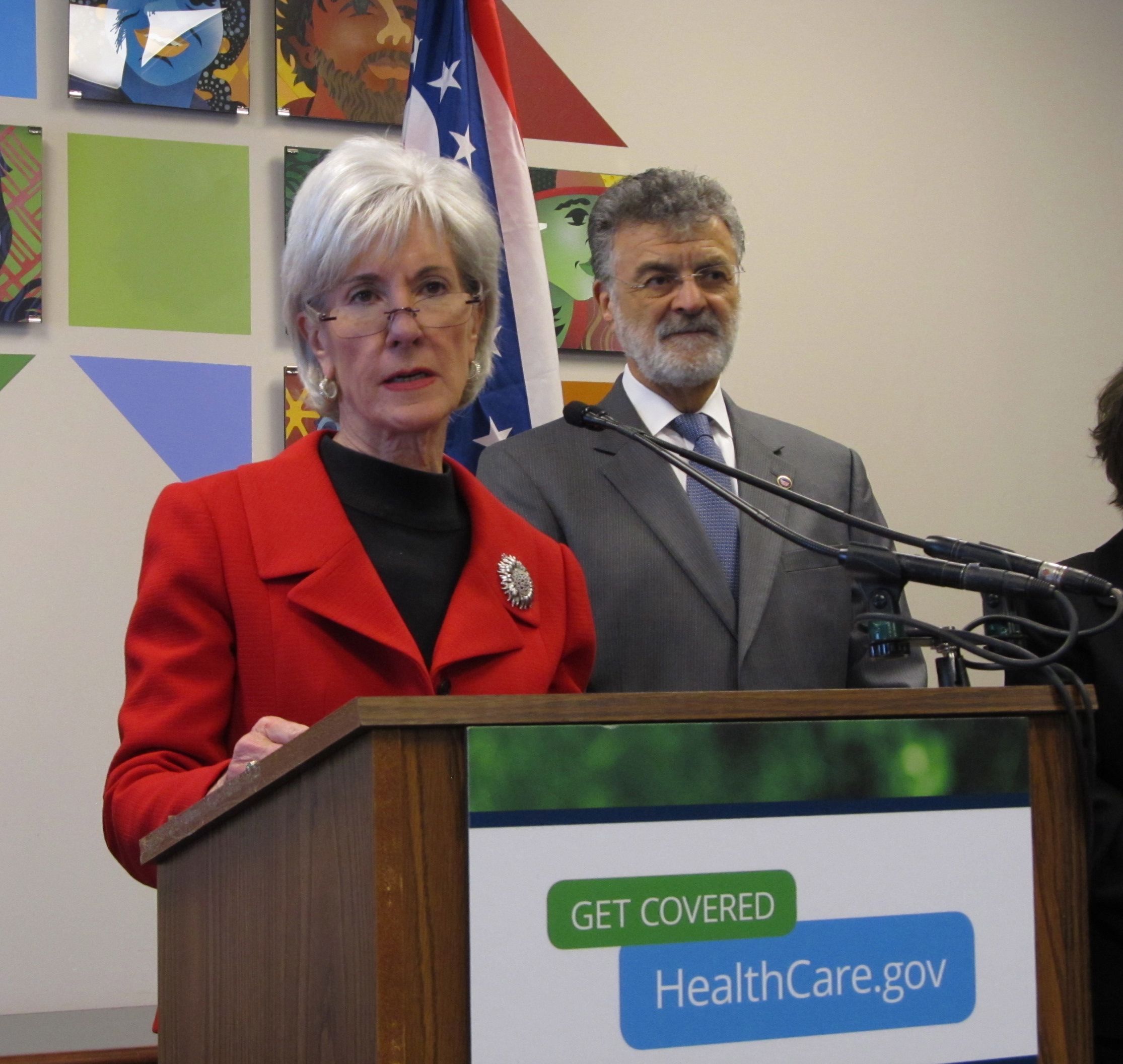Enrollment shifting under ACA in final days
Sebelius says more Latino outreach is needed, meanwhile commercial enrollees are popping up more often
The population signing up for coverage during the final days of open enrollment is shifting to include more private-plan members, according to a group of application counselors in Ohio. Initial waves brought Medicaid-eligible consumers as expected, but more higher income families are starting to sign up.

Leah Pallant sings 'It's fun to promote the A.C.A' for HHS Secretary Kathleen Sebelius in Cleveland“We are eating, sleeping and breathing this,” says Leah Pallant, a certified application counselor in Cleveland.
Pallant sees 15 to 20 consumers a day for one-hour appointments to help them sign up for coverage through Medicaid and the federally operated healthcare.gov site. In between appointments, she works the phones to schedule more visits before the March 31 deadline. The pace has picked up exponentially in the past several days, Pallant says.
Sebelius visit
On March 14, Health and Human Services (HHS) Secretary Kathleen Sebelius held a conference at a Federally Qualified Community Health Center on the west side of Cleveland to rally the region toward enrollment-part of her nationwide tour that’s been going on for months. Only about 80,000 people have signed up for health coverage in Ohio under the Affordable Care Act, which is a low number compared to the 193,000 who are eligible. Sebelius says the problem is that too few people know about the plans that are available.
The state ranks in the top 10 nationwide for Medicaid assessment determinations, however, at more than 97,000 through March 1. Ohio expanded Medicaid under Affordable Care Act provisions in October 2013.
Open Enrollment 2015

HHS Secretary Kathleen Sebelius and Cleveland Mayor Frank JacksonNext year, Sebelius says, the information gathered from the 2014 experience will help officials identify populations with low enrollment and target them for more outreach.
“We’re looking at everything from having more culturally appropriate and language appropriate outreach,” she says. “Spanish and English are fine, but we have a very diverse country and lots of people speak lots of languages.”
She says the largest portion of the uninsured are Latino and “there’s a lot to be gained in the Latino community.” The rocky start to healthcare.gov caused the delay of the Spanish-language version of the site, which wasn’t operational until December.
“I know the Cuidado de Salud site was slow in getting up and running, and part of that was intentional because what we did not want to do was have a nonfunctional website in both Spanish and English,” she says.
This was her second visit to Cleveland in two months.
Chief Pharmacy Officer Jason R. Smith on the Challenges Health Systems Face
May 28th 2025Jason R. Smith, Pharm.D., appointed as chief pharmacy officer in February 2025 for the University of Rochester Medical Center, talks about building a stronger workforce, managing drug shortages and keeping up with changes in regulations because of the new administration.
Read More
In this episode of the "Meet the Board" podcast series, Briana Contreras, Managed Healthcare Executive editor, speaks with Ateev Mehrotra, a member of the MHE editorial advisory board and a professor of healthcare policy and medicine at Harvard Medical School. Mehtrotra is also a hospitalist at the Beth Israel Deaconess Medical Center in Boston. In the discussion, Contreras gets to know Mehrotra more on a personal level and picks his brain on some of his research interests including telehealth, alternative payment models and price transparency.
Listen
Doing More and Saving More with Primary in Home Care
September 1st 2021In this week’s episode of Tuning In to the C-Suite podcast, MHE Associate Editor Briana Contreras interviewed VillageMD’s Senior Medical Director of Village Medical at Home, Dr. Tom Cornwell. Dr. Cornwell discussed the main benefits of primary care at home, which includes the benefit of cost savings for patients, maintaining control of hospital readmissions and others. Dr. Cornwell also noted what has changed in the industry of at-home care and if there has been interest from payers like insurance companies and medicare in the service.
Listen